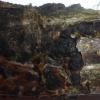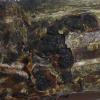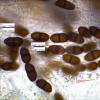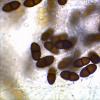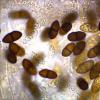
29-12-2025 17:44
Isabelle CharissouBonjour,J'aimerais savoir si d'autres personnes au

29-12-2025 17:12
 Bernard CLESSE
Bernard CLESSE
Bonjour à toutes et tous,Pourriez-vous m'aider à

12-11-2021 00:03
Lepista ZacariasHi everybody,A week ago in my fiels trip I noticed

29-12-2025 17:01
Gernot FriebesHi,I'm looking for help with this hyphomycete with

29-12-2025 08:30
Hello.A tiny ascomycete sprouting under Juniperus

29-12-2025 10:15
Hulda Caroline HolteHello, I found and collected this propoloid ascom

29-12-2025 09:38
Oskari VirtanenHi,could anyone help me identify this, I suspect P

... found last week in the National Park Eifel, Germany. I found it the second time there, both times on the same host. I know V. insitiva from thick Fagus logs also (several finds in the National Park BAvarian Forest).
Are there different species in this complex? I hesitate to think a fungus on Fagus is the same than on Cytisus ...
Best regards from Lothar
This species has been found on Ulex and Caesalpinia in the UK, according to the Fungal Records of Database of Britain and Ireland, and judging from the Britaish records can have a wide range of hosts.
As Cytisus is related to Ulex and Caesalpinia, all of which belong to Fabaceae, it would seem feasible for the Valsaria to be found on Cytisus as well.
Best wishes
Vivien
Hallo Lothar,
On thick logs of Fagus usually there are Myrmaecium rubricosum and M. fulvopruinatum. On Fabaceae there are different species but usually not V. insitiva. See the publication Jaklitsch et al. 2015, Valsaria and the Valsariales, Fungal Diversity 73:
https://www.ncbi.nlm.nih.gov/pmc/articles/pmid/27274717/
or for the original version:
https://www.researchgate.net/publication/276441471_Valsaria_and_the_Valsariales
Regards Hermann

Hello Vivien and hello Hermann,
thank you very much for the important information -
and you, Hermann, for the very valuable link. I think this brings new questions but hopefully soon some answers to me!
Best regards from Lothar

Hi Hermann
I just read in the paper of Jaklitsch & al. - and find that insitiva and the other species (robiniae, spartii) are hardly to separate morphologically. And further: insitiva was (as the only of the three species!) found on Cytisus scoparius. So ....
Best regards from Lothar
Yes, these are sometimes difficult to separate, without sequence data. In these cases one has to stick to V. insitiva sensu lato...
Best regards,
Hermann


